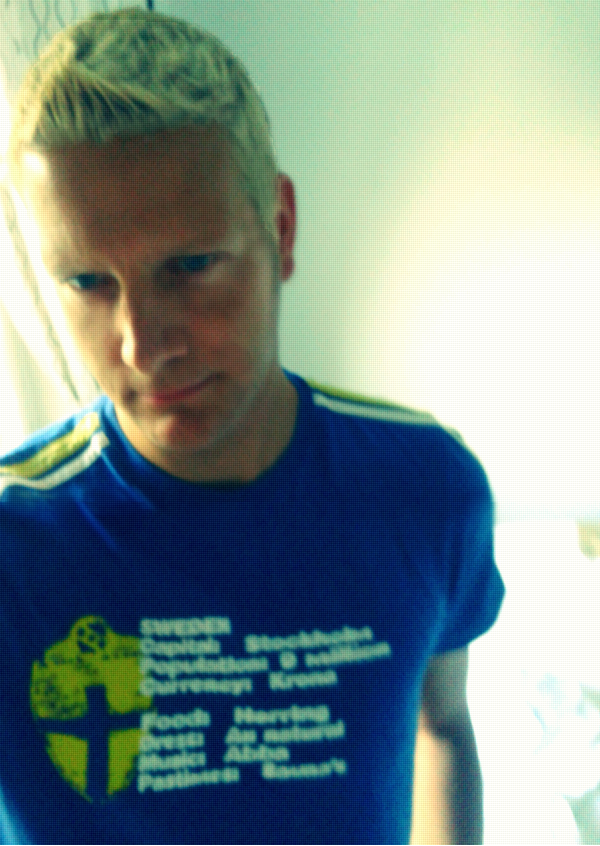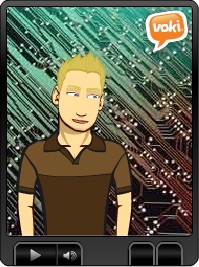As we worked with our first topic in Open Networked Learning (#ONL172) we were asked to reflect on our digital presence and identity as well as our experience of digital consumption, communication, collaboration and creation. In my PBL group one subtopic that we had in FOCUS was “What about digital identity – how does it develop?” and from my own INVESTIGATION I SHARE this text and video in our collaborative space (Padlet):
Maybe Different identities can be categorized into Cultural Generations (i.e. Generation X, Millenials etc.). Another approach is that we create our digital identity through primary socialization early in life in the home and in the peer group we acquire the primary discourse that we use to make sense of the world and interact with others. (Gee, 1989)
Q1:1 Who are you as an individual in the digital age, and what characterizes your journey so far?
Answer: I was an early adopter of digital communication and started my first blog on GeoCities and then SUNET at 15 years old. There was no template and html-files was uploaded with ftp-service to a server. In year 2000 I started my teaching career at an upper secondary school with specialization in ICT and Project Based Learning. Where we were pioneers with students’ digital portfolio. Now in 2017 I’m engaged as a Teacher Ambassador to foster the use of technology in education. Some of my projects involve collaborative problem solving with Minecraft for Education (a form of virtual Lego) and virtual fieldtrips with Skype in the Classroom or Hangouts on Air across the world.
Q1:2 Think about your own digital literacy and identity in your personal and professional life, and how they are linked.
Answer: I have not always used the latest technology since schools have a limited budget, but I’ve focused on the affordance of technology. To me literacy allow you to use digital technology to get the work done, but to fully express yourself you need to develop digital fluency. In social media I’m known as the Networked Teacher (Nätbaserad lärare) in my Swedish Network. Sharing in English and international networking is connected to the NGO eduToolkit.

Q1:3 What ONL might mean for your development and what is your experience from the course so far?
Answer: I’ve facilitated my first MOOC to help in-service teachers from Sweden and Norway to integrate new media and technologies into today’s K-12 learning environments. I’m also writing my masters theses called “Teachers Open Online Learning for Professional Development” and this is why this Open Networked Learning course is very relevant for my own development. My experience is that the structure and scenario initiate collaboration. Then each participant also take responsibility to fill out the Activity Tracker (in a google form that we are allowed to edit during the course). This is part of the instruction: Below you will find sub-fields for each of the 5 topics. Please fill in (briefly) where and how you have been active. It could be for instance your activity in your PBL-group (if you took the lead for a specific topic, if you participated to make the presentation, etc), links to collaborative group work, links to written blog posts and written feedback, discussions in the main forum, participation in webinars etc. Please add links where appropriate. I also find it easier to write a reflective blogpost, since I’m describing work that has already been done during the investigation of the topic.
Q1:4 What readings and discussions have you consulted during this topic?
Answer: I got the idea that digital identity can be categorized into Cultural Generations, but ended up looking on primary socialization. According to Paul Gee, discourses are ways of being in the world that are forms of life which integrate words, acts, values, beliefs, attitudes and social identities as well as gestures, glances, body positions, and clothes. Through primary socialization early in life in the home and in the peer group we acquire the primary discourse that we use to make sense of the world and interact with others [1]. I then thought about how we create our own narrative based on our ontological beliefs and how socializing with people with similar beliefs can create a “Filter Bubble”. At Wikipedia we can read: A filter bubble is a state of intellectual isolation that can result from personalized searches when a website algorithm selectively guesses what information a user would like to see based on information about the user, such as location, past click-behavior and search history. As a result, users become separated from information that disagrees with their viewpoints, effectively isolating them in their own cultural or ideological bubbles.
Going back to Paul Gee’s idea of primary discourse, he also writes that “Filtering” is a process whereby aspects of the language, attitudes, values, and other elements of certain secondary discourses (e.g. dominant ones represented in the world of school and translocal government and business institutions) are filtered into primary discourse (and, thus, the process whereby a literacy can influence home-based practices) [1]. This got me thinking about how our online spaces define our identity, with Blogs,Twitter conversations and hashtags as well as LinkedIn account. I revisited my account on Klout and found it to be quite accurate.

In the article A Digital Identity: Creating Uniqueness in a New Contextual Domain I red: Individuals have often used various methods to express who they are and what they represent. While a digital representation has both positive and negative consequences for a real-life setting, the techniques and features of what has become a digital literacy have allowed individuals to better define the world they live in, as well as how they want to be represented in that world [2]. I’m now left with the question if I “own” and “control” my digital presence and identity…
References:
[1] Gee, J.P. (1989). Literacy, discourse and linguistics: Introduction. Retrieved from http://jamespaulgee.com/pdfs/Literacy%20and%20Linguistics.pdf
[2] A Digital Identity: Creating Uniqueness in a New Contextual Domain. Available from: https://www.researchgate.net/publication/259990379_A_Digital_Identity_Creating_Uniqueness_in_a_New_Contextual_Domain [accessed Oct 11 2017].














